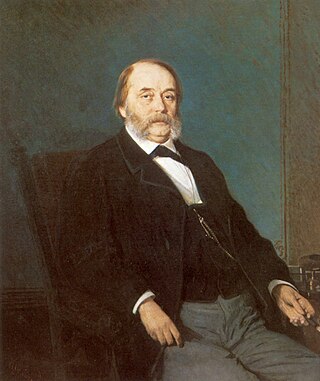
Ivan Aleksandrovich Goncharov was a Russian novelist best known for his novels The Same Old Story, Oblomov (1859), and The Precipice. He also served in many official capacities, including the position of censor.
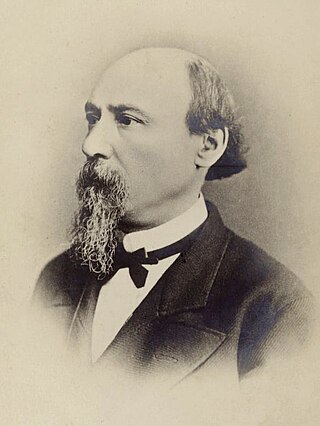
Nikolay Alexeyevich Nekrasov was a Russian poet, writer, critic and publisher, whose deeply compassionate poems about the Russian peasantry made him a hero of liberal and radical circles in the Russian intelligentsia of the mid-nineteenth century, particularly as represented by Vissarion Belinsky and Nikolay Chernyshevsky. He is credited with introducing into Russian poetry ternary meters and the technique of dramatic monologue. As the editor of several literary journals, notably Sovremennik, Nekrasov was also singularly successful and influential.

Nikolay Mikhailovich Karamzin was a Russian historian, romantic writer, poet and critic. He is best remembered for his fundamental History of the Russian State, a 12-volume national history.

Vissarion Grigoryevich Belinsky was a Russian literary critic of Westernizing tendency. Belinsky played one of the key roles in the career of poet and publisher Nikolay Nekrasov and his popular magazine Sovremennik. He was the most influential of the Westernizers, especially among the younger generation. He worked primarily as a literary critic, because that area was less heavily censored than political pamphlets. He agreed with Slavophiles that society had precedence over individualism, but he insisted the society had to allow the expression of individual ideas and rights. He strongly opposed Slavophiles on the role of Orthodoxy, which he considered a retrograde force. He emphasized reason and knowledge, and attacked autocracy and theocracy.
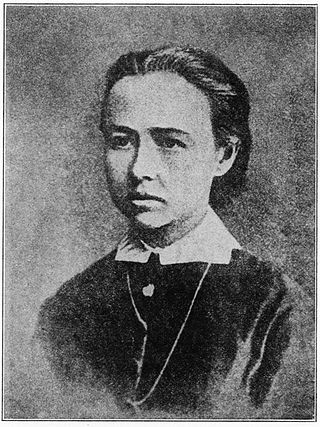
Sophia Lvovna Perovskaya was a Russian revolutionary and a member of the revolutionary organization Narodnaya Volya. She helped orchestrate the assassination of Alexander II of Russia, for which she was executed by hanging.

The Russian Academy of Arts, informally known as the Saint Petersburg Academy of Arts, was an art academy in Saint Petersburg, founded in 1757 by the founder of the Imperial Moscow University Ivan Shuvalov under the name Academy of the Three Noblest Arts. Catherine the Great renamed it the Imperial Academy of Arts and commissioned a new building, completed 25 years later in 1789 by the Neva River. The academy promoted the neoclassical style and technique, and sent its promising students to European capitals for further study. Training at the academy was virtually required for artists to make successful careers.

Nikolai Dmitrievich Brashman was a Russian mathematician of Jewish-Austrian origin. He was a student of Joseph Johann Littrow, and the advisor of Pafnuty Chebyshev and August Davidov.

Land and Liberty was a Russian clandestine revolutionary organization in the period 1861–1864, and was re-established as a political party in the period 1876–1879. It was a central organ of the Narodnik movement.

Alexander Nikolayevich Ostrovsky was a Russian playwright, generally considered the greatest representative of the Russian realistic period. The author of 47 original plays, Ostrovsky "almost single-handedly created a Russian national repertoire." His dramas are among the most widely read and frequently performed stage pieces in Russia.

Nikolay Ivanovich Pirogov was a Russian scientist, medical doctor, pedagogue, public figure, and corresponding member of the Russian Academy of Sciences (1847), one of the most widely recognized Russian physicians. Considered to be the founder of field surgery, he was the first surgeon to use anaesthesia in a field operation (1847) and one of the first surgeons in Europe to use ether as an anaesthetic. He is credited with the invention of various kinds of surgical operations and developing his own technique of using plaster casts to treat fractured bones.
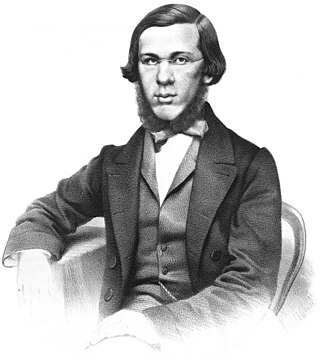
Nikolay Alexandrovich Dobrolyubov was a Russian poet, literary critic, journalist, and prominent figure of the Russian revolutionary movement. He was a literary hero to both Karl Marx and Lenin.

The Rumyantsev Museum evolved from the personal library and historical collection of Count Nikolay Rumyantsev (1754–1826). Its origin was in St. Petersburg in the Rumyantsev house or mansion, building number 44 on the English Embankment overlooking river Neva. After Nikolay died in 1826, his brother Sergei converted the house into a museum. It was opened to the general public in 1831, initially for one day a week, and the remaining days were for study.

Yuri Alexandrovich Shaporin, PAU, was a Soviet composer.

Dmitry Vasilyevich Grigorovich was a Russian writer, best known for his first two novels, The Village and Anton Goremyka. He was lauded as the first author to have realistically portrayed the life of the Russian rural community and openly condemn the system of serfdom.

Gleb Ivanovich Uspensky was a Russian writer and a prominent figure of the Narodnik movement.

Nikolai Gerasimovich Pomyalovsky was a Russian novelist and short story writer.
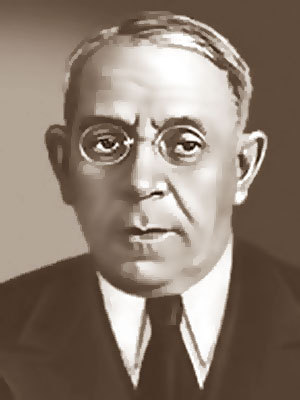
Vladimir Alekseyevich Shchuko was a Russian architect, member of the Saint Petersburg school of Russian neoclassical revival notable for his giant order apartment buildings "rejecting all trace of the moderne". After the Russian Revolution of 1917 Shchuko gradually embraced modernist ideas, developing his own version of modernized neoclassicism together with his partner Vladimir Gelfreikh. Shchuko and Gelfreikh succeeded through the prewar period of Stalinist architecture with high-profile projects like the Lenin Library, Moscow Metro stations and co-authored the unrealized Palace of Soviets. Shchuko was also a prolific stage designer, author of 43 drama and opera stage sets.
Alexander Vyacheslavovich Ossovsky was a Russian and Soviet musicologist, music critic and professor at Saint Petersburg Conservatory, pupil of Nikolai Rimsky-Korsakov, and friend of Sergei Rachmaninoff, Alexander Siloti and Nikolai Tcherepnin.

Otechestvennyua Zapiski was a Russian literary magazine published in Saint Petersburg on a monthly basis between 1818 and 1884. The journal served liberal-minded readers known as the intelligentsia. Such major novels as Ivan Goncharov's Oblomov (1859), Fyodor Dostoyevsky's The Double (1846) and The Adolescent (1875) and Mikhail Saltykov-Shchedrin's The Golovlyov Family (1880) made their first appearance in Otechestvennye Zapiski.

There is a community of Serbs in Russia, also known as Russian Serbs, which includes Russian citizens of ethnic Serb descent or Serbian-born people residing in the country.



















